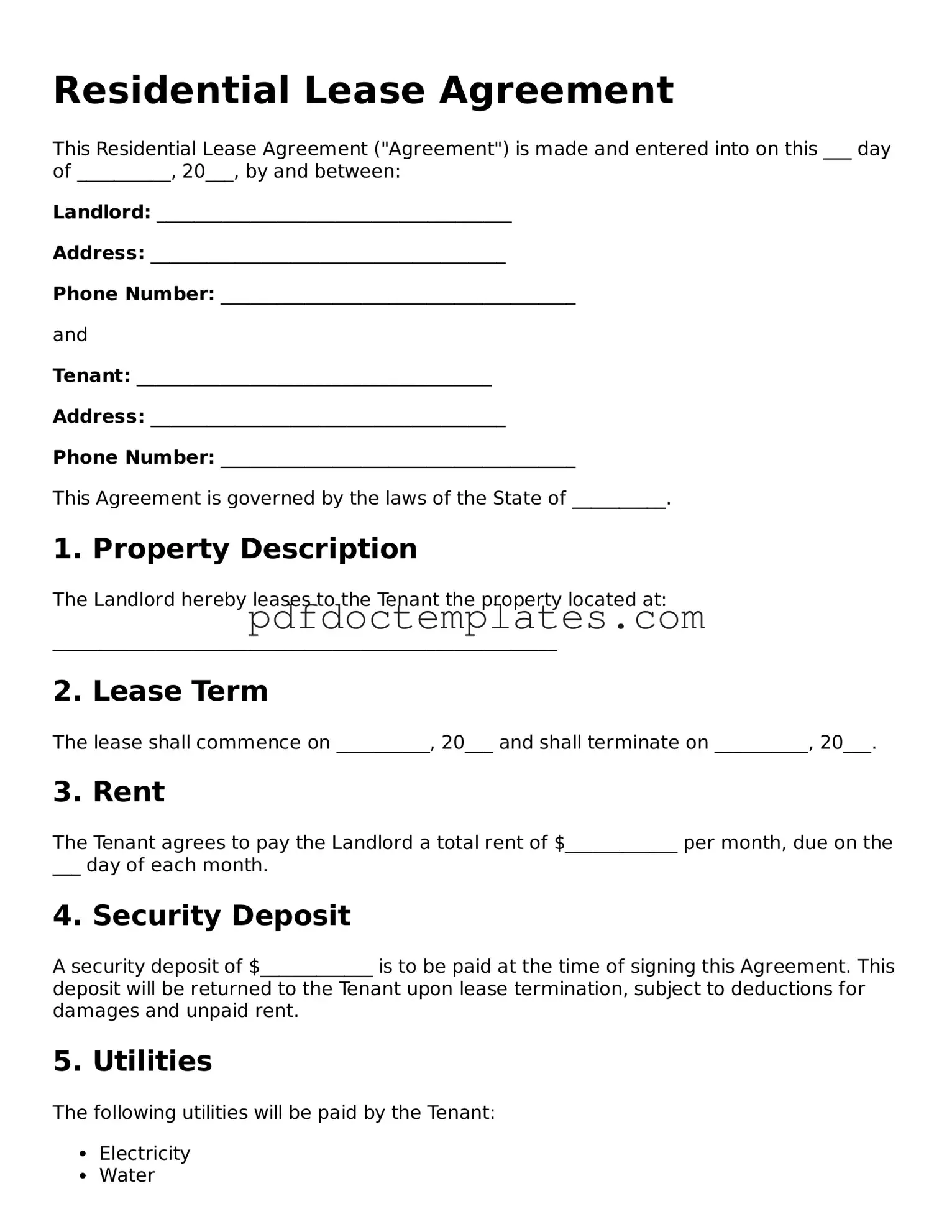Residential Lease Agreement
This Residential Lease Agreement ("Agreement") is made and entered into on this ___ day of __________, 20___, by and between:
Landlord: ______________________________________
Address: ______________________________________
Phone Number: ______________________________________
and
Tenant: ______________________________________
Address: ______________________________________
Phone Number: ______________________________________
This Agreement is governed by the laws of the State of __________.
1. Property Description
The Landlord hereby leases to the Tenant the property located at:
______________________________________________________
2. Lease Term
The lease shall commence on __________, 20___ and shall terminate on __________, 20___.
3. Rent
The Tenant agrees to pay the Landlord a total rent of $____________ per month, due on the ___ day of each month.
4. Security Deposit
A security deposit of $____________ is to be paid at the time of signing this Agreement. This deposit will be returned to the Tenant upon lease termination, subject to deductions for damages and unpaid rent.
5. Utilities
The following utilities will be paid by the Tenant:
- Electricity
- Water
- Gas
- Internet
- Cable
6. Use of Property
The Tenant agrees to use the property solely for residential purposes and to comply with all applicable laws and regulations.
7. Maintenance and Repairs
The Tenant will keep the premises clean and in good condition. The Landlord is responsible for major repairs unless damages are caused by the Tenant's negligence.
8. Termination
Either party may terminate this Agreement by providing ___ days’ written notice to the other party.
9. Signatures
By signing below, both parties agree to the terms of this Residential Lease Agreement:
Landlord Signature: ___________________________ Date: _____________
Tenant Signature: ___________________________ Date: _____________
This Agreement represents the entire understanding between the parties and supersedes all prior discussions and agreements.
